USB charging on a 12v boat, fie on Apple?
It was easy to gather a slew of devices currently on board Gizmo that hunger for a USB power supply at least occasionally. Heck, when the Verizon Android Galaxy phone is providing an LTE WiFi hotspot and also streaming Bluetooth audio to the Fusion IP700 stereo as it is now — I’m online while listening to a Maine radio station — it needs to be charged almost constantly. The hard-working phone is also why I keep those two USB charged/charging batteries topped up for shore trips (and, yes, they do make great press event swag, thank you Simrad and FLIR). The Phonak hearing aid accessory needs nightly charging and while the DeLorme InReach Explorer in the background can go for days doing satellite tracking and a few messages, I prefer to keep it plugged in so my Share Map stays complete. In short, I need multiple 12v USB power sources to keep this crew happy and thus, this entry will cover several types I’ve tested. There are a lot of cables involved too, but it’s nice that all the gadgets pictured use a standard USB mini or micro size power/data plug, with one very significant exception…
Of course, it’s the Apple iPad mini that uses a proprietary Lightning connector instead of a standard USB plug. The tablet does have excellent battery life and I understand that it needs more than a standard USB 5 volt 1 amp charger (or .5 amp laptop USB port) to renew the battery efficiently, but iPad charging issues go well beyond that. My experience is that even if you use a charger rated at the 2.1 amps purportedly needed by most iPads — newer models have gone to 2.4 amps — you won’t know for sure that you’ll see the charging screen above when you plug the Lightning cable in. There are endless online discussions about this and it may be that Apple uses a unique way of detecting a higher amperage charger that you’ll only find for sure in Apple Certified chargers, none of which is ideal for a boat (in my opinion).
Before describing my search for a good marine iPad charger, let me grumble a warning about the Lightning cable itself. The official Apple one above failed during my trip from Maine to Baltimore, which caused some anxiety as I didn’t have a spare and I use the iPad mini a lot. Fortunately, I was able to get this connector to pass a charge again by gently sanding the contacts with fine emory paper lubricated with a little oil. But I’ve had Apple-made cables fail before, and cheap knock-off cables have done worse. The back-up Lightning cable I should have brought from home and highly recommend is Amazon’s own Apple Certified design. It seems sturdier than Apple’s and reasonably priced, especially given that Apple apparently gets a few dollars fee for every one.
By far the most common way to charge USB devices in a car or boat is with adapters like the ones above. They fit what are now called “12v accessory outlets” though oldsters like myself know that the “outlet” was originally designed for cigarette lighters. That’s a limited and very short-term use and as that Wikipedia entry rightly notes, the design has “poor contact stability” even though my boat came with four such power receptacles installed. Of course, I tried them, and adapters like the one at left with the 2.1A output sometimes charged my iPad. Sometimes, not always. Then one day I realized that the adapter had gotten quite hot, apparently because it was trying to draw those 2 amps through a poor contact. It was not the first time I’ve had such trouble, which is why I wonder if such “outlets” should be used untended on a boat.
First I tried the type of 12v USB power source designed to install behind a dash, which work neatly with accessories like the Tallon Ultimate iPad Mount or just a regular USB cable snaked to your favorite charging station. I couldn’t find a known brand model, but both the CPT (no longer available) and the RioRand (available here at Amazon) charge every USB device on Gizmo just fine…except the iPad. Even though both chargers claim 3A output, sometimes the iPad says it’s charging, sometimes not.
I realize that iPads often charge slowly even when they aren’t acknowledging it, but I was frustrated nonetheless and was often using the Apple AC charger with Gizmo’s inverter just to be sure. And when I recently shopped for the type of USB charger that can replace an existing cigarette lighter receptacle, my expectations for iPad compatability were low. So far, though, the Blue Sea Dual USB Charger Socket is working very well and the similar XYZ Boat Supplies model pretty well. Specifically, my iPad mini has always shown charge status when plugged into either Blue Sea outlet, but it failed once when plugged into the XYZ’s high power outlet (and its blue LED even went out). I’m not surprised that the Blue Sea product seems more reliable, but I don’t know how either charger will work with new iPads that would like 2.4 amp charging. Anyone?
Finally, don’t these annoying incontestabilities, worn cables, and so forth make one yearn for a universal inductive charging standard? I don’t know if that will ever happen, especially for Apple devices, but at IBEX I saw how inductive charging is coming neatly to boats and will write about it soon.
 PS, 11/3: Carling Technologies will soon offer a V-Charger that will fit in the Contura switch mount that’s already found on many boats. It will offer 2.4 amps on each output and will be waterproof when not in use:
PS, 11/3: Carling Technologies will soon offer a V-Charger that will fit in the Contura switch mount that’s already found on many boats. It will offer 2.4 amps on each output and will be waterproof when not in use:


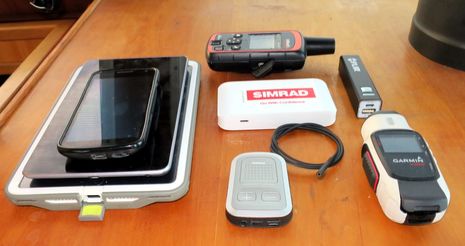
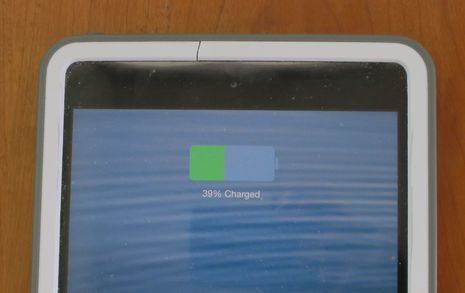
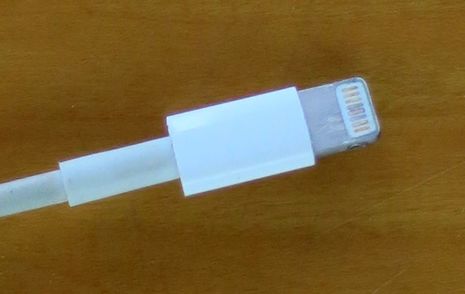
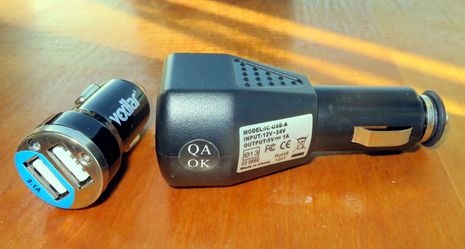
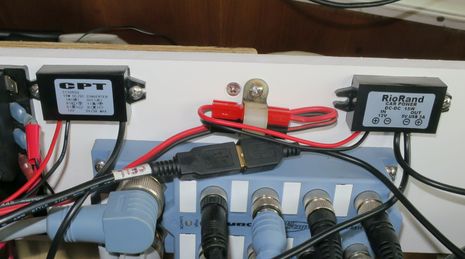
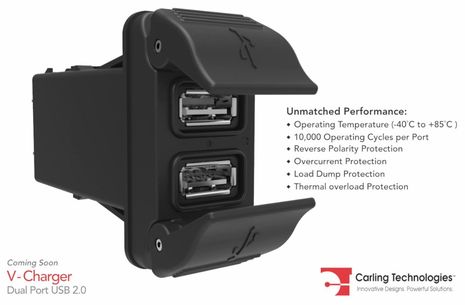
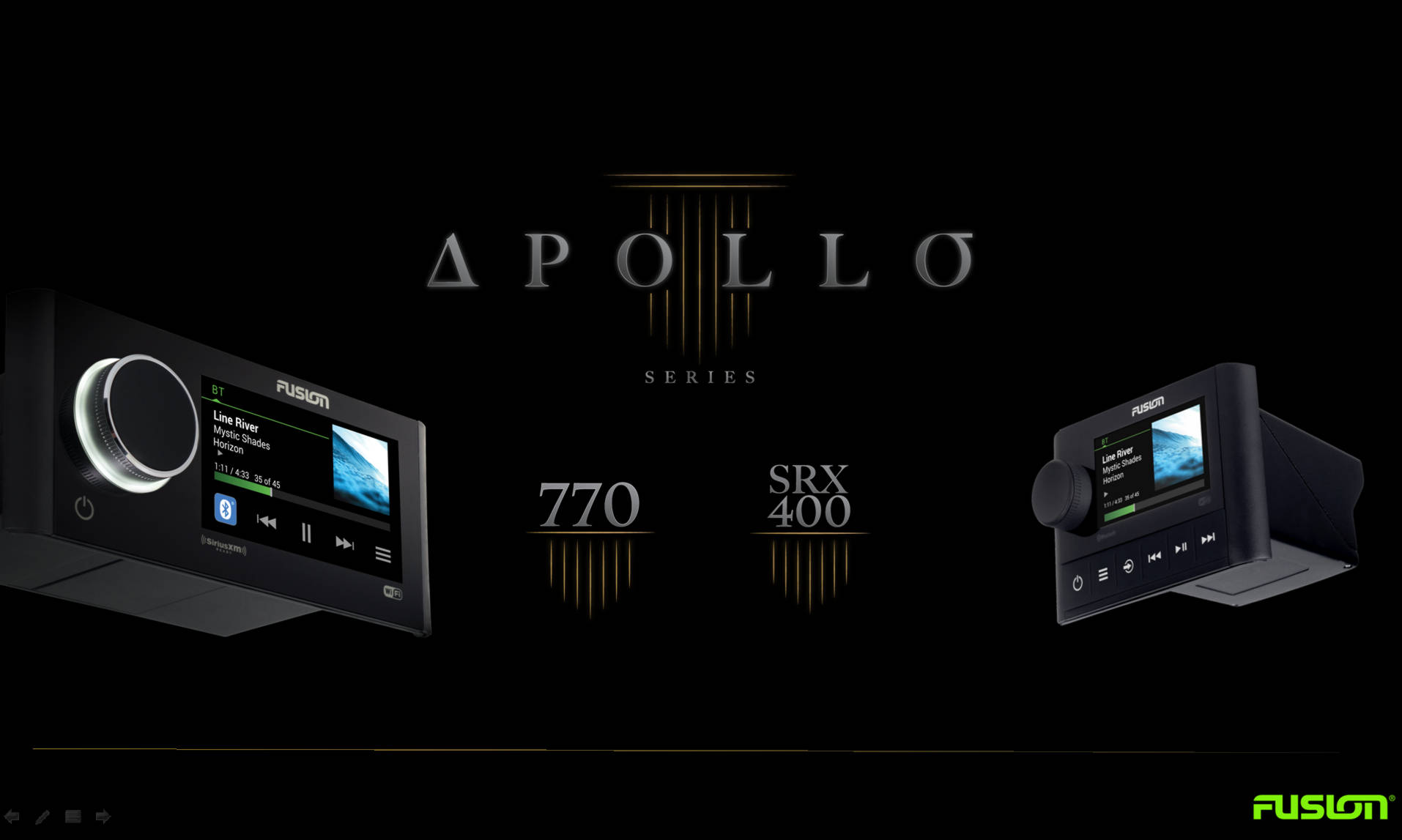
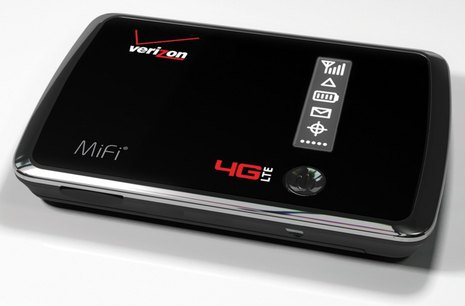
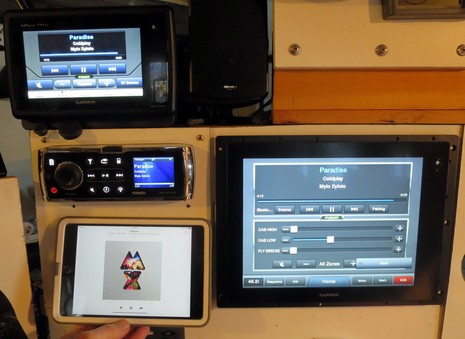









Cruisers should have a Starbright Corrosion Buster Pen aboard to deal with situations like your corroded lightning connector. They also are great for tarnished battery contacts in portable electronic devices. Unlike sand paper or emery cloth they usually polish away corrosion without removing metal plating. I think mine has lasted a decade and they are still around ten bucks.
You might want to check the contacts on the female socket of your iPad. If you are having multiple lighting cables all fail with arcing or pitting corrosion, it could be bad contacts in the iPad damaging several good cables. I know that is hard or near impossible to look in and see them, but maybe with a strong light and a magnifying glass or loupe you might be able to see if the contacts on the female side are good and clean.
I have two “12 v cigarette plug 2.1a USB chargers” that have never failed to charge both of my iPads on my boat. I do know the issue of ipad not charging with a lower 1a USB source, but they both have always charged consistently with any of the 2.1 rated 12v adapters I have. It could be all the issues you are having stem from a corroded connector on the iPad.
I also have never had a lighting cable go bad at the lighting plug end. I have had several fail at the USB end with insulation pulling out of the strain relief, and broken wires.
What a great post. Just bought 2 of the blue sea. I like to leave my iPad on as an anchor alarm but don’t like to have the inverter on. And my charger gets hot as well.
Also nice seeing you in the channel today.
Jason
The Blue Seas USB outlets will charge an iPad and keep a charge on it,while in use, but they will not support full recharging while browsing the net. They also struggle when a iPhone is plugged into the second USB.
We travel with 3 iPhones (his, hers, my work), 2 iPads, and a Bluetooth wireless speaker that needs occasional charging. I ended up adding more of the outlets. We started with one at the helm and then we added two in the v berth on our 28′ boat.
I agree on the higher quality of the Amazon cables. We have a long (3m?) that works great on our nightstand. We keep 4 cables on the boat, 2 in each car, kitchen, living room and 2 in the bedroom. Learned our lesson as the original Apple cables seem to fail at the worst time.
I went the DIY route.
I ordered some buck regulators and a bunch of 2-port USB connectors, like the kind found on computer motherboards. I wired up 5 of these for a bank of 10 USB ports and two regulators to provide 3A across 8 USB ports and 3A on 2 USB ports. I coated the whole thing with a conformal coating spray from a local electronics shop and it’s worked a treat for the past couple of years. Mind you, I am on a fresh water lake and the ports are all installed at the nav desk, down below, where it’s dry…
/Jason
Two comments:
Starbrite corrosion buster for the Lightning connector?
I have used a pencil eraser for sometime to remove both visible and invisible corrosion. Yes you can get corrosion that is not visible to the naked eye and that may effect the connection between two items.
For charging USB devices aboard, we converted our standard 120V AC outlets in each stateroom to ones that also do USB charging. The downside with the unit we purchased has only 1 120v AC adapter but has 2 USB adapters with LED’s that light up when connected. We rarely use one 120v device muchness 2. When underway we turn on the inverter with the outlets on and charge up 4 devices. Our guests like having their chargers in their room and it keeps the gang of chargers and devices away from the nav table. We picked up the outlet receptacles at Lowes. They were about ~$20 each.
Cheers,
Sam Moore
I’m guessing the aggregate output is 3amps maximum? Blue Seas makes some quality equipment perhaps they will upgrade to the newer 2.4amp standard in the future?
Bill
You might check into the Duracell Powermats that work directly with devices that are built for inductive charging or have special charging cases, like for Apple (not cheap, boo Apple), to allow them to inductive charge. Just lay the device on the Powermat and walk away. The pad helps guide the device into the proper charging position. No wires. Mats for up to 3 devices simultaneously. The mat signals when each device is fully charged. This unit apparently passed a Consumer Reports moisture test.
The Nokia DT-900 comes at far less cost but it only handle one device at a time. It has 12v output though. Devices can be in a silicon or plastic case and still charge.
Pretty extensive discussion of Lightning cables here:
http://thewirecutter.com/reviews/best-lightning-cable/
I never realized it before, but I recently read on their website, “Tef-Gel applied between electrical contacts and connectors does not increase the resistance of the connections even at hundreds of amps, maintaining the integrity of EMI shielding.”
Might be a good idea to apply a very thin layer to the plug to avoid the corrosion.
I use
Wagan Travel Charge 9.6 Amp Quad USB Power Hub
bought from ThinkGeek at
http://www.thinkgeek.com/product/16cc/
with which our iPads, iPhone4S, iPhone5, FRS radios, Sony camera and a handful of other devices seem to be happy and charge at full capacity. It has a permanent place at Redline’s station.
I was just about to post about my Wagan power hubs, but Redline beat me to it. I have two of these on the boat, mounted and wired in permanently. The one issue I had is that with the first one I ordered, the 12V plug had a bad fuse, so I thought the unit was DOA. Luckily I checked that before sending it back. I was cutting the cord anyway, but I just wanted to make sure the thing worked before I mounted it permanently. Having these aboard has significantly cut down the need to use the inverter, and the competition for whose device was next in line for our previous two 12V chargers.
As far as the lightning plug goes, I really haven’t had any issues, but I know that some people have had issues. I did just order one of the Amazon ones that Ben mentioned. I am still looking for a very low profile plug for wall mounting an iPad mini without a big plug sticking out of it. I found this wireless charging system that has a very thin, flexible cable and zero profile plug like I was thinking of, but I haven’t been able to find just a charging cable like that.
Actually, not so sure it’s fair to blame Apple– and you can overcome this issue with a little electronics skill.
To make a long story short, Apple devices need analog voltage on the communications pins to signal available current.
Four resistors will do it; you can modify either the charger or an extension cable. Google “apple usb charger pinouts”– many websites show how to do it.
I installed the 12v Blue Sea twin USB charger (pictured above) on my boat with the amazon lighting cable and it charges my iPad Air better than the (apple included) wall charger used on land.
I’ve been fighting some USB power issues myself lately – and I’ve found an extremely handy device to troubleshoot the goings-on. Just do a search on Amazon or eBay for “usb power meter” – I paid less than $10 each on ePay for a couple different ones (one is just volts and amps, the other will totalize the charge)- just the thing for a gadget geek and very handy in seeing what devices REALLY want and need to charge. Also spots defective USB ports in a flash.
Ben, good discussion, but I don’t think it’s entirely fair to single out Apple. Other manufacturers do the same.
I also use a Dell Venue 8 pro tablet as as Windows 8 device for OpenCPN and SSB comms onboard and its Dell USB charge cable is proprietary.
Although it looks like a normal USB to micro USB cable, the data pins are actually shorted together and the tablet will not charge with a normal USB cable (or without a 2.1Amp supply either).
IMO this is actually worse than Apple, as it pretends to be something it isn’t.
I’ve installed a bunch of 12v to USB charge sockets around our boat and have actually opened them up and joined the data pins together do I don’t have to use the special Dell cable.
Readers may also be interested that there is a plug-in 12v cigarette adaptor made by InCase that provides dual 2.4A outlets so you can properly charge two hungry modern devices simultaneously. (The cheap ones only supply 2.1 to one of the USB sockets)
Adrian
Slingthehook.com (crossing the Atlantic in a months time)
I’m cautiously optimistic that USB Type-C, due to start showing up next year, will solve a lot of these problems once it becomes widespread.
Type-C provides up to 5A 20V and the connector works in any orientation. (Power levels must be software-negotiated; the device has to tell the power source what voltage/current it wants.) It looks like the USB-IF will recommend that all new USB-capable devices use the Type-C connector.
For the next couple of years, though, expect the charger confusion to continue. I have come across a lot of chargers that don’t perform as advertised, and a few that have dangerous design faults (eg. the potential for 120VAC to appear on the USB end if the humidity’s high).
I have used the Scosche DC charger for a couple of years on boats and car and it works great in my opinion…..
http://thewirecutter.com/reviews/best-usb-car-charger/
http://www.amazon.com/gp/product/B0077PM3KG/ref=oh_aui_detailpage_o08_s00?ie=UTF8&psc=1
Based on the recommendation in this post I purchased the “Amazon’s Own Apple Certified Lightening cable”, (6′ long version) It arrived today, Oct 27 2014, and DOES NOT fit the iPhone 5s or the iPad Air.
I believe they are defective so shipped them back to Amazon. It seems to me the lightening connector is too fat to fit the plug on the iPhone or iPad. This is unfortunate because the cable itself is much more robust then anything Apple has. Even the cable to plug connection appears stronger and more durable. But, there is just no way the lightening end slides into the phone or iPad. I’m sure this is a defective batch since Ben obviously has working cables from Amazon.
I installed the Blue Sea Systems panel mount 12V DC to dual USB outlet. It charges anything that I have thrown at it so far: iPhone 4, iPhone 5, iPad 3
I’m curious, when any of these chargers are attached to your 12v supply but are not supplying 5v to a device are they still drawing a tiny current from your battery? I know my old fashion “wall wart” transformers for various home devices stay warm all the time, so they must be using a little juice all the time. I’d hate to have any device on my boat putting a constant parasitic load on my battery bank. Anyone? Thanks.
Yes, all these draw some small current when idle; one thing I liked about the Wagan 4-port is that it has a power switch so it can be shut off when not in use, without having to pull the plug.
Out of curiosity, I tested a cheap eBay model I had here – two ports, one of which is supposedly 2a (best it does with my iPad is 1.4a), but with no external lights or other indications of being powered. With 13.8v applied, it draws 4.95 milliamps. 5 ma = 1 amp hour every 100 hours — not a lot, but of concern if your boat is left uncharged for many weeks.
Interestingly, I noted that when I turned off the power supply and the voltage decayed, the device drew more and more current (as much as 8 ma) until it dropped to zero at about 3v applied – clearly an indication of a switching power supply..:-)
Redline – nice quick test there. Very useful. Thanks.
I definitely encountered some noise from the switching power supplies on the Blue Seas USB plugs. Seems to create noise on VHF and FM reception. Not sure how it effects FM transmit. It increases with the USB load, and is not present when the Blue Seas device is in standby. I have three of thse Blue Seas plugs.
I called Blue Seas and they said pretty much all USB power plugs do this. They suggested twisting the power wires, which I tried, but it didn’t seem to have much effect. I suspect they meant twisting the power wires of the Stereo and VHF radio.
As it is, I turn off the usb power when radio use is important. I’m hoping to find a more permanent solution at some point.
Steve,
A EMI filter should fix your problem.
http://www.jameco.com/1/3/emi-suppression-core
Disconnect the wires going into the power plug. Loop the power wires through the ferrite core, and reconnect the wires …
I used the 4 port type 2.0 version of startech’s industrial rail mount for powering my Raspberry Pi media center. Hard wire it in and it takes anything from 7 to 24 volts, down converts it to 5.0 volts and provides whatever amperage your toys want.
5 stars. No affiliation. Just a happy customer.
http://www.amazon.com/StarTech-com-Mountable-Rugged-Industrial-ST7200USBM/dp/B003AVPUZG/ref=pd_sim_pc_3?ie=UTF8&refRID=1F2ZZMYDHC7B30XHNR2S
Note the new PS added to this entry about Carling Technologies’ new heavy duty USB charger that will fit in many existing Contura switch panels
Interesting (and potentially useful) PS, Ben. I also noted your reference to inductive charging – since that works only with AC, how would it apply to boat use, short of leaving the inverter/generator on all the time? Also, how would the magnetic field issues be addressed? I see the potential for a real compass-killer..;-)
AS a side note, one of the things I am most concerned with regarding guests on our boat (when we’re going out, especially offshore) is magnets – you would be amazed how many magnets are floating around in today’s stuff – and you DON’T want ’em near your compass or heading sensor!
Didn’t read the entire thread, but thought I’d leave my 2 cents…
17′ Crestliner (90HP)
iPad 3 (with all peripheral services disabled)
Vexilar SonarPhone running Navionics
Driveway test with my new “gack” was successful in getting everything to communicate, I quickly realized that the connectors (cigarette) weren’t good enough to supply the iPad with enough power to keep up with the demand of both apps. I tried all the different cig connectors I had in my collection, but none we’re able to keep with the task while running these resource heavy apps.
When all this failed I decided to try a 175W inverter I had laying around. At first I used the the battery clamps that came supplied with the inverter and it worked. Then I tried connecting to cig port and with the same results. It charges very slowly, mind you, but the iPad does charge.
WARNING…
Once I had the inverter hooked up and happy I decided to plug a USB cable into the port on the inverter to charge my BadElf GPS unit, much to my dismay… The order of operations I chose to do this fried my BadElf. Fortunately, BadElf replaced my unit free of charge. DON’T plug in your devices then plug in the cig adapter! Bad things can happen. Probably why the BadElf cig adapter came with a 1A fuse built into it. The unit must be very sensitive to electrical spikes.
Hope this helps someone. Cheers!
Dear Friends,
Good day .
We visited your website and got your products with high quality and very Professional.
We are the direct manufacture for the sockets you are selling!
We can get the WIN-WIN via our qualitied marine/Auto products.
I am Dora from Ningbo Jinhong Electronic Co., Ltd.
–The OEM supplier of west marine switch and AAA Company.
–The specialized and direct manufacturer in marine /automobile equipment with product patent.
Our main products:
a, waterproof carling rocker switch
b, marine switch panel
c, blue sea marine surface mount (DC Acc Socket)
Our products are your good choice:
–profuse designs with series quality grade
–very competitive price
— The direct manufactory
Do not hesitate to let me know if you are interested in any of our products .
Could you help me cc e-mail to your purchasing department or tell me e-mails and telephone? Thank you so much!
Best regards
Dora
BlueSea systems finally makes a “fast charge” model:
Panel Mount
They also have the rocker switch mount style:
Rocker Switch Mount
Sounds good and I like seeing the 4.8 amp total output, but I wonder if the “intelligent device recognition” will apply to my Samsung Note4 phone, which can charge at more than twice the normal speed with Samsung’s own AC USB charger. I do know that 3rd party devices can handle Samsung Fast Charge because I’ve seen the new Weego 44 power pack do it.
Good question. I suspect the answer is no. The websites which talk about fast charge don’t usually talk about how it works, but this one does:
http://thewirecutter.com/blog/quick-charge-usb-c/
The Samsung fast charger puts out up to 9 Volts. Future fast chargers will go up to 20 Volts.
And I thought USB was 5 Volts. Times change!
The specs for the Blue Sea Fast Charge USB charger say 5 VDC plus/minus 5%. That’s a clear “no’, but on the other hand they also say “intelligent device recognition allows rapid charging of phones, tablets, or other mobile devices”, which seems to say “yes”.
Thanks, Norse, that’s a great reference. I just checked the fine print on my Samsung “Adaptive Fast Charging” USB source and sure enough it outputs 5.0v @ 2.0A OR 9.0v @ 1.67A.
According to tech support at Blue Sea Systems, Samsung is using one of the Qualcomm fast charging standards, which their new 12/24v USB outlets do not support.
So apparently the Weego 44 does support at least the Qualcomm 9v fast charging standard that the Samsung Note4 uses. I received a sample 44 yesterday and can confirm that it fast charges my phone even with its battery pack more than half empty (by its LED indicators) and is also recognized as a valid charger by my iPad Pro 9.7″.
But I notice that Apple now also offers a multi-voltage USB charger, though its fast charge is 14.8v!
https://www.macstories.net/ios/testing-apples-29w-usb-c-power-adapter-and-ipad-pro-fast-charging/
All trickery to get more power through those tiny little wires (and contacts) in the charging system. It would be more encouraging if there were an industry-wide specification for the required intelligent handshake instead of each manufacturer doing it on their own. Maybe the manufacturers will at least publish their interface specs so someone can make a multi-device charger.
Of course, once you get to about 12-13 volts, it leaves the non-AC chargers out.
Found these recepticals on Amazon. Put one on each side of master bed, one in the forward cabin for guests and one in the salon.
https://www.amazon.com/gp/product/B0128SSKSA/ref=oh_aui_detailpage_o08_s00?ie=UTF8&psc=1
Just need them on an inverter circuit and your good to go.
Dang! The nice marine USB charge ports discussed in this entry are now “old technology” in a pretty significant way. It took me a while to figure out, but the “fast charger” that came with my Samsung Note4 is a rapidly spreading tech called Qualcomm Quick Charge that uses higher voltages, not amperage, to charge devices MUCH faster:
https://www.qualcomm.com/products/features/quick-charge
http://www.androidcentral.com/what-qualcomm-quick-charge
Sigh, but USB-C with the possibility of USB Power Delivery (USB PD) — mas 100 W (20 V / 5 A) — is also coming along, especially in Apple world:
http://thewirecutter.com/blog/quick-charge-usb-c/